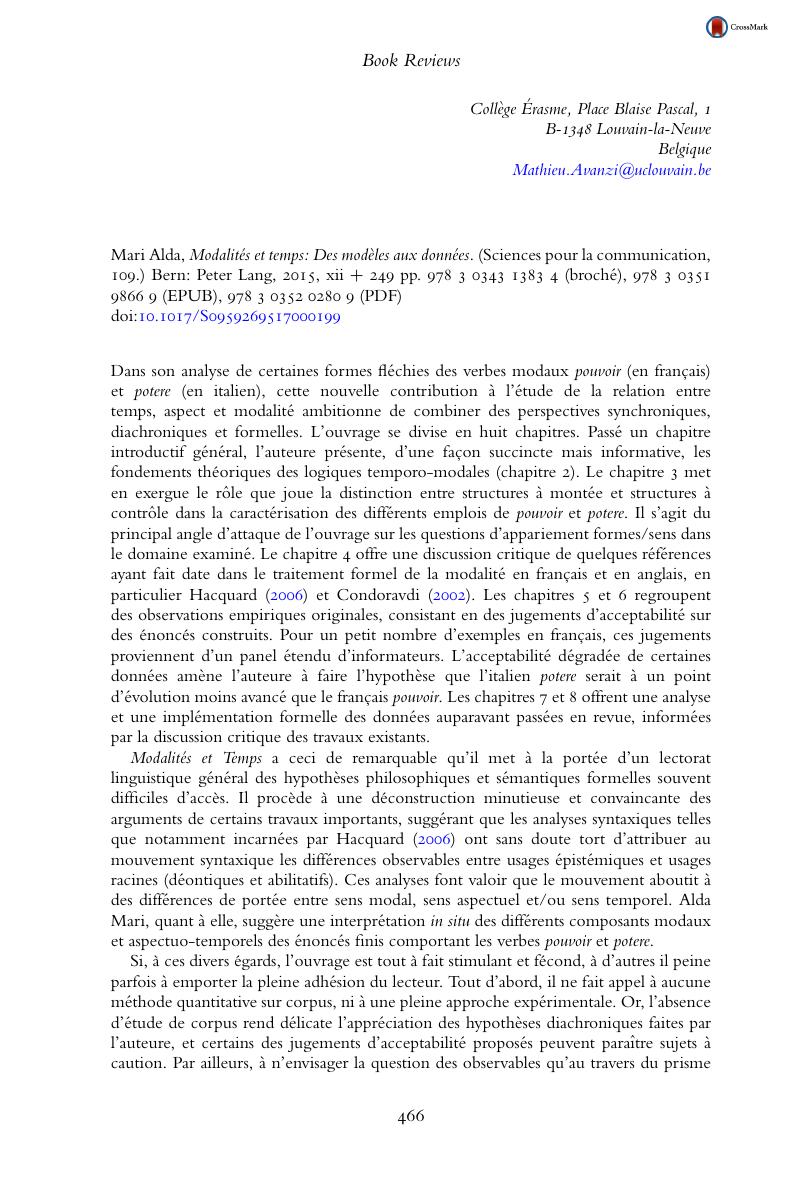No CrossRef data available.
Article contents
Mari Alda , Modalités et temps: Des modèles aux données. (Sciences pour la communication, 109.) Bern: Peter Lang, 2015, xii + 249 pp. 978 3 0343 1383 4 (broché), 978 3 0351 9866 9 (EPUB), 978 3 0352 0280 9 (PDF)
Published online by Cambridge University Press: 22 August 2017
Abstract
An abstract is not available for this content so a preview has been provided. Please use the Get access link above for information on how to access this content.

- Type
- Book Review
- Information
- Copyright
- Copyright © Cambridge University Press 2017
References
RÉFÉRENCES
Barbet, C. (2014). Sémantique et pragmatique des verbes modaux français. Thèse de doctorat, Université de Neuchâtel/ULCO.Google Scholar
Condoravdi, C. (2002). Temporal interpretation of modals – Modals for the present and for the past. In: Beaver, D. I., Casillas Martínez, L. D., Clark, Brady Z. and Kaufmann, Stefan, The Construction of Meaning. Stanford: CSLI, pp. 59–88.Google Scholar
Hacquard, V. (2006). Aspects of Modality. Thèse de doctorat, Massachusetts Institute of Technology.Google Scholar
Hilpert, M. (2016). Change in modal meanings. Constructions and Frames, 8.1: 66–85.CrossRefGoogle Scholar



